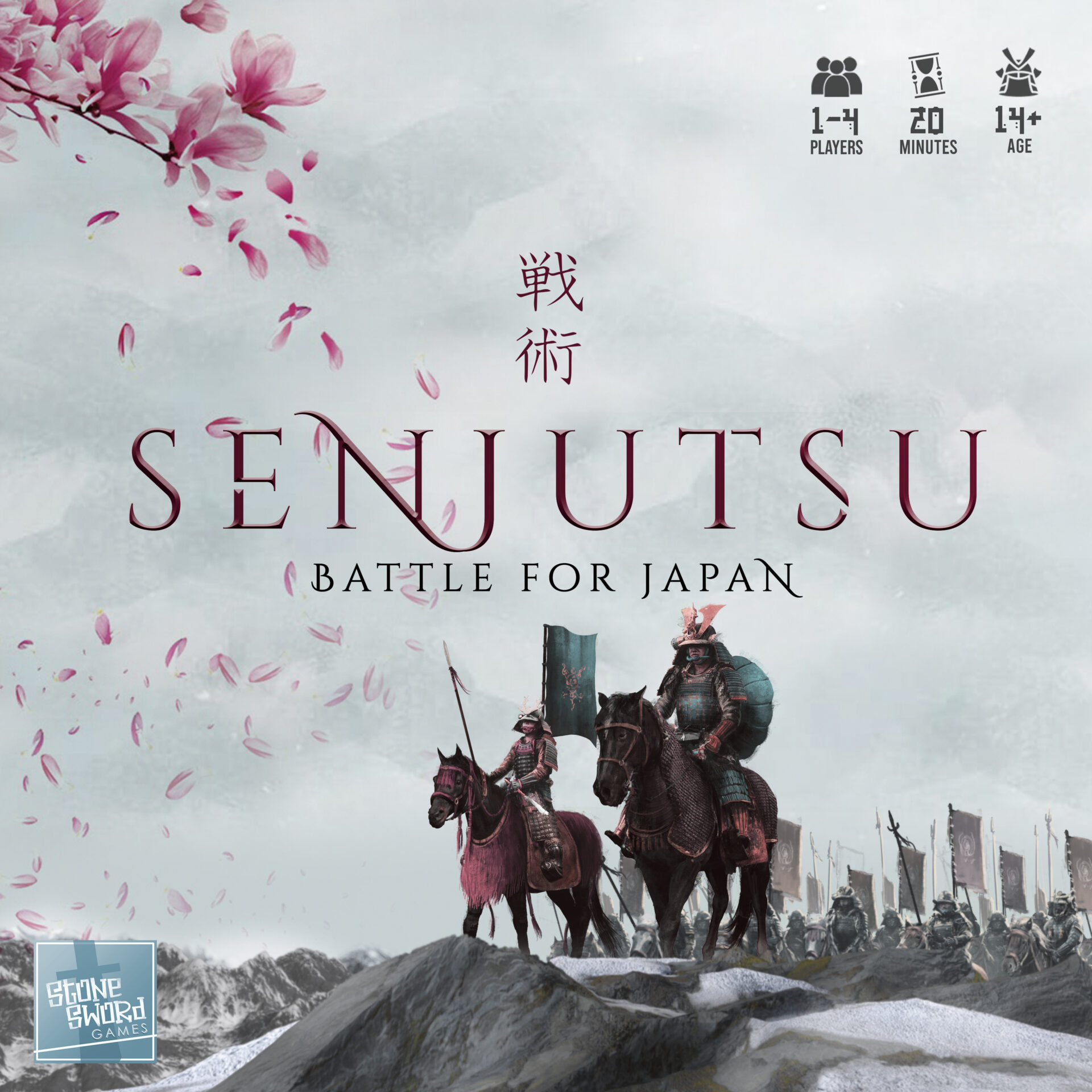I’m a self-confessed Japanophile. I’ve been a huge fan of Japanese popular culture and history since my teens, I took Japanese language lessons for years at evening classes, and I still find it fascinating. Imagine my excitement then when I have not one, but two things called Senjutsu to enjoy this year. One of my favourite bands – Iron Maiden – released an album by the same name, and the folks at Stone Sword Games brought a new game to the UK Games Expo. A game of samurai battling to the death.
“Senjutsu” translates roughly as tactics, or strategy. As such, it’s the perfect name for a game that revolves around samurai battlefield action. Players negotiate the hex-based board with a deck of cards, hoping to build clever combinations. It’s a little like a deck construction game like Magic: The Gathering, the Pokémon Trading Card Game, or even Stone Sword Games’ other title – Z-Ball – which I previewed earlier this year. The big difference between Senjutsu and those other games, is the addition of a game board where the action takes place.
“If you do not control the enemy, the enemy will control you”
Position is everything in Senjutsu, and as someone who has studied the Japanese sword martial art Iaido in the past, I was so pleased to see this replicated in the game. The samurai are all right-handed, and in the real world this means as someone defending themselves from a swinging sword or knife attack, you want to be on the attackers left side. The action cards follow suit, and an attack like ‘Wild Swing’ is deadly if you’re in the path of the blade.
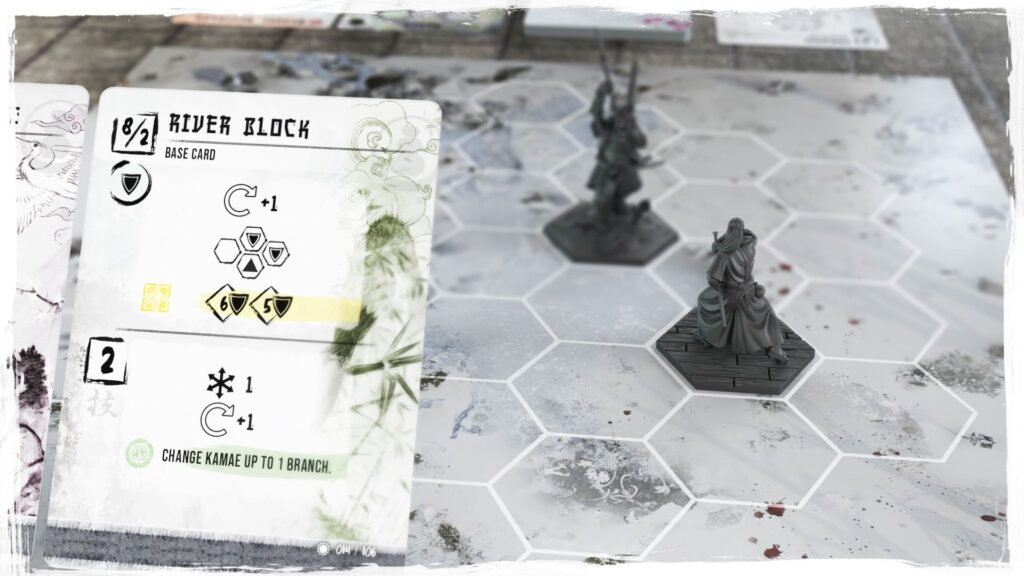
Building strategy around this positional premise is handled really well in Senjutsu. In a lot of mini-based games with hexes to negotiate, it’s only proximity to other pieces that matters. In Senjutsu, rotational alignment is crucial. As you play cards from your hand, you stalk across the battlefield, circling one another, trying to simultaneously attack and defend. It lends the game the feel of an epic battle from any number of samurai films and anime.
The Kurosawa-esque drama is present in the way turns unfold too. Players choose a card and place them face-down on the table, and then simultaneously flip them. Each card has a different Initiative value, and the higher value cards go first. There’s palpable drama as eyes dart around the cards, waiting to see whose blade tasted blood, and who has a new wound to tend to. While I can understand that might feel like playing blind to some, it replicates how the swordplay should feel, reading your opponents intentions.
“You must understand that there is more than one path to the top of the mountain”
Senjutsu does a few things really well. There’s a starting, basic deck you can build from the plethora of cards included in the box, and it’s a good idea to stick with that deck for your first few games. Once you’re comfortable with that deck, there are rules included to let you construct your own deck. It’s really easy and adds soul to the game. It allows you to play the way you want to play. You want to be the equivalent of a bulldozer, pushing forward with wild attacks? You do you, friend, Senjutsu gives you the tools.
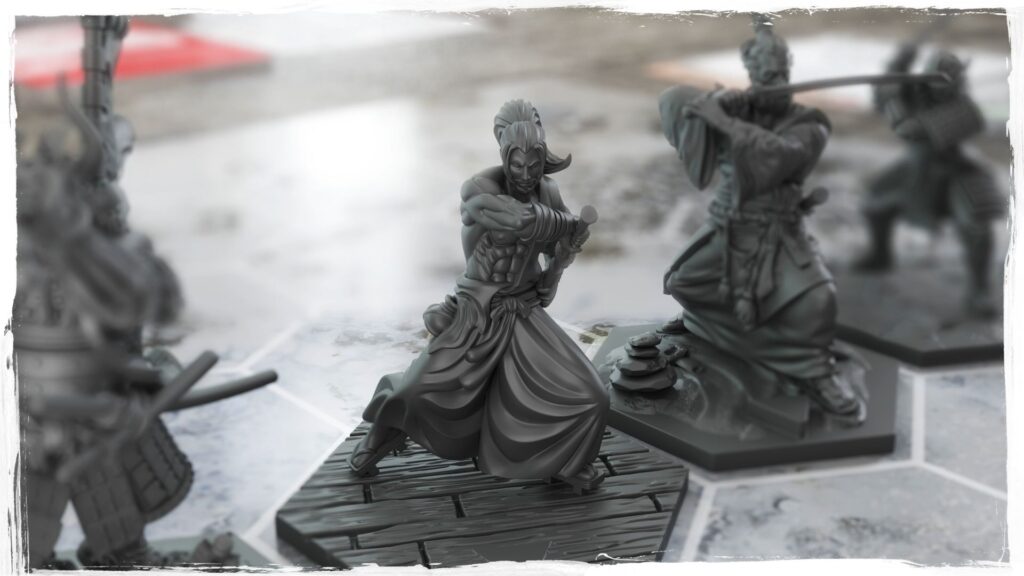
What I love about Senjutsu, is the way the game feels like a direct battle between you and the other players. It’s a game of reading your opponents, trying to second-guess them, and conversely trying to bluff them. The game is really easy to learn, and to teach, which means you can get straight into the heat of battle. Repeated play is rewarded with an understanding of the ebb and flow of battle, and the options available to you.
Each available character has slightly different abilities available to them, which adds a nice layer of asymmetry to the action. I really like the Kamae trees too. These are cards with a token on, and by moving that token around the branches your character can take different stances to bolster things like their attack and defence abilities on each card. It’s another seemingly small thing that can really change the balance of a battle.
“Do nothing that is of no use”
Do you know that feeling at the start of a game of Chess, or Draughts/Checkers? Your opponent makes their first move and you immediately start trying to get into their head. What are they doing? What’s their plan? What exactly is that cunning dog up to now?? That’s how Senjutsu gets after just a game or two. The game also feels very different with different player counts. Two players is great, a dance, a duel for the ages. With three or four it’s a very different feel, where unspoken pacts are made and broken in an instant. It’s a fantastic feeling.
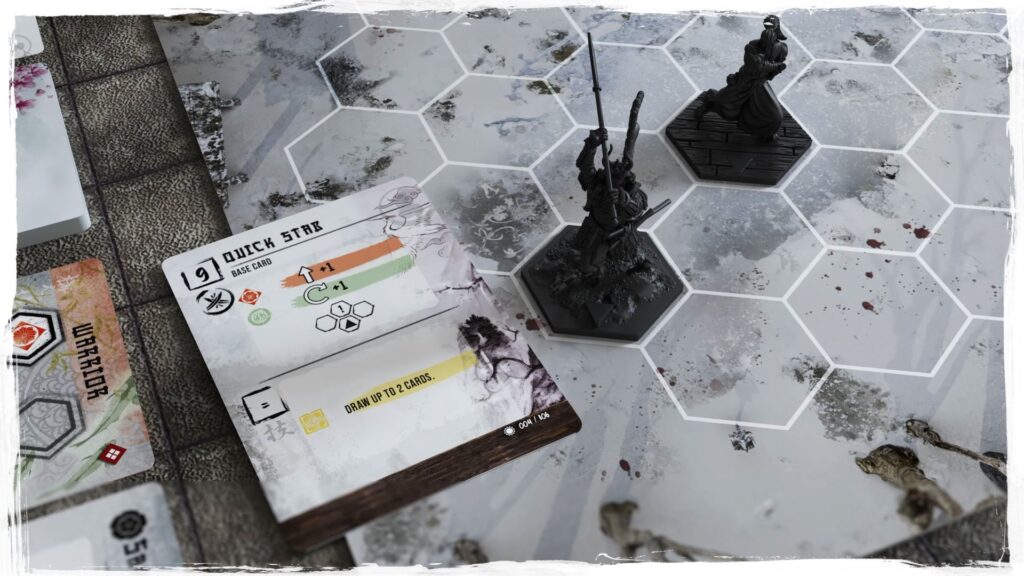
My main worry with any deck-construction game is the balance of any luck in the game. This usually depends on factors like the size of the deck, the number of duplicate cards allowed, and the hand size. Senjutsu’s balance feels great, and there never feels like a truly dead turn. There’s always something good you can do.
Final thoughts
At its core Senjutsu is a simple game. Draw a card, play a card, resolve the card, repeat. But my oh my, there is so much in those easy steps. If I had to sum-up Senjutsu in one word, it would be elegant. So much love and attention to detail has been poured into this game, and you can see it, and feel it, in everything. The iconography is clear, the rules (even in a beta state in the prototype I played) are well-structured and don’t miss anything out.
It feels like a perfect blend of abstract strategy and deck-construction games. Everything is streamlined, and I have to use that word again, balanced. If you’re starting with the pre-built decks, you can have the game unboxed, setup, played, and back in the box again in half an hour. That’s absolutely bonkers! It won’t happen that way, because playing a game of Senjutsu is a bit like opening a packet of Jaffa Cakes – there’s no way you’re stopping at just one.

Paul and James, the brains behind Senjutsu and Stone Sword Games, have made something really special here. If anything is going to put someone off it could be the theme, but that’s only a matter of personal preference. Happily, this isn’t just a case of ‘Oh, samurai are cool!’ tactless cultural appropriation. A quick look at the Kickstarter page shows they’re working with three Cultural Consultants, which is something that more, much bigger publishers need to do.
I’ve got no hesitation at all in recommending Senjutsu, and it’s a joy to see a small studio taking on the big boys and girls. I take pride in highlighting the work smaller studios do on this site, and I’m sure this is only the start of great things for Stone Sword Games.
Osu!
(note: the headings in this preview are quotes taken from The Book of Five Rings, by Miyamoto Musashi, a 17th Century swordsman)
Preview copy kindly provided by Stone Sword Games. Thoughts and opinions are my own.
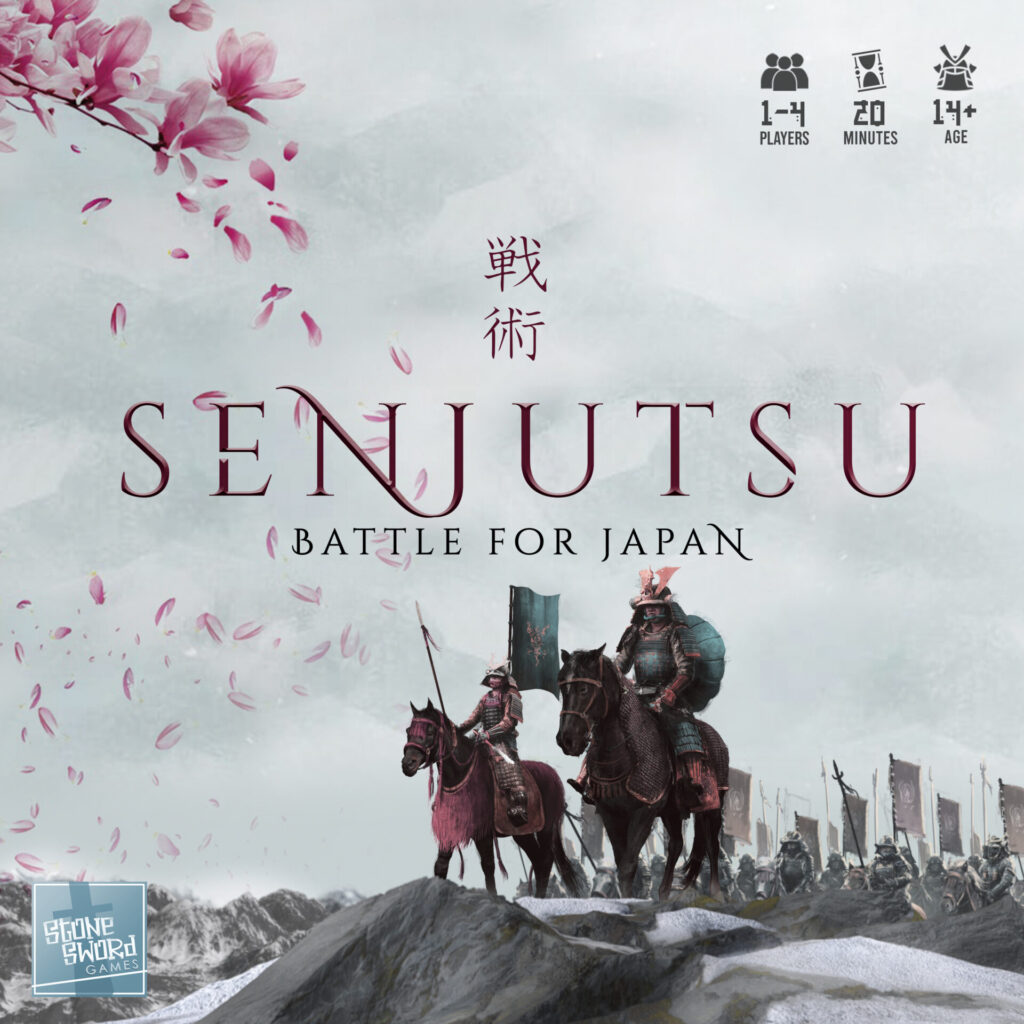
Senjutsu (2021)
Designer: Paul D. Allen, James Faulkner
Publisher: Stone Sword Games
Art: Imad Awan
Players: 1-4
Playing time: 15-20 mins
